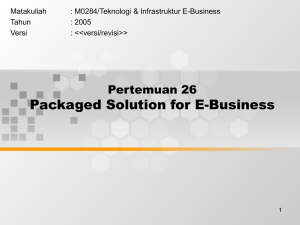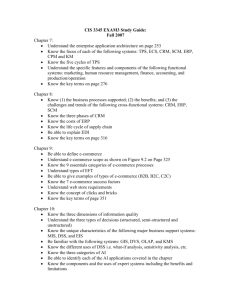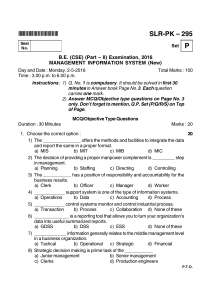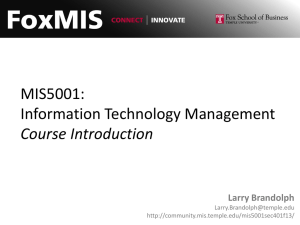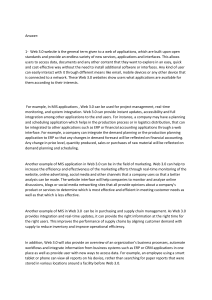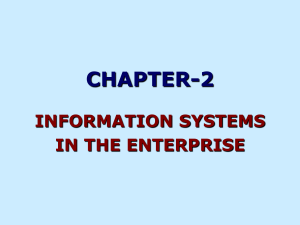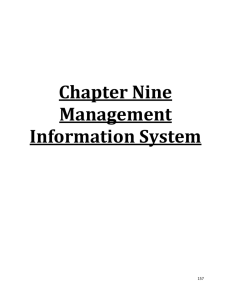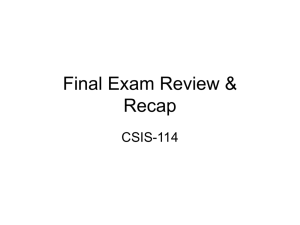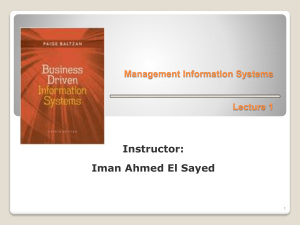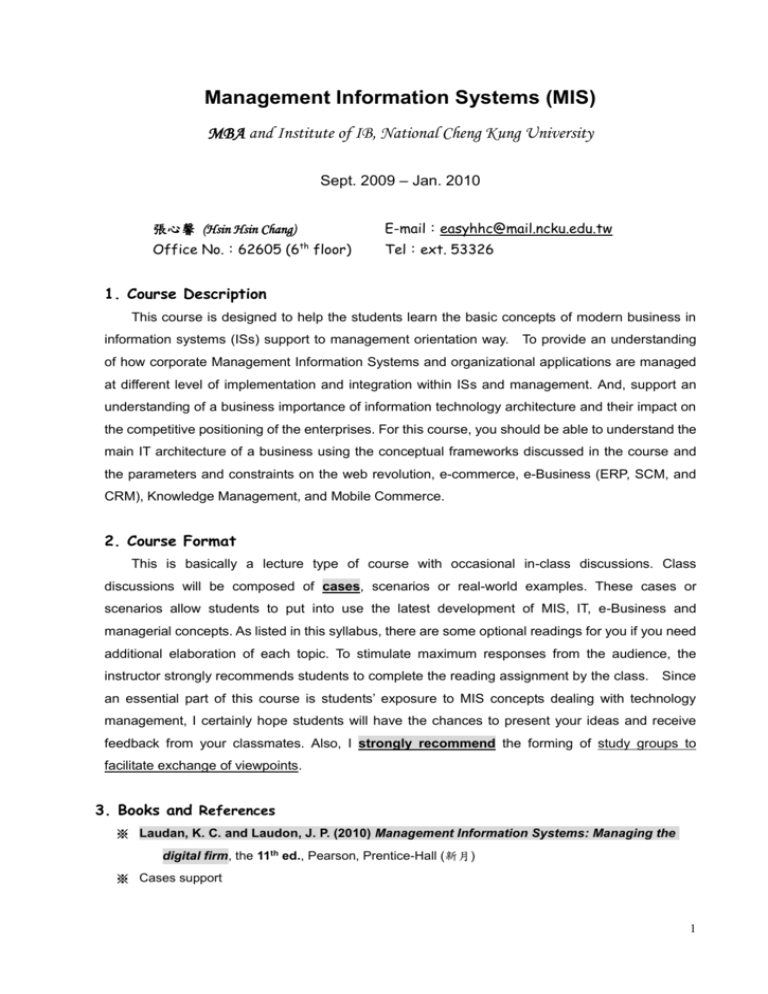
Management Information Systems (MIS)
MBA and Institute of IB, National Cheng Kung University
Sept. 2009 – Jan. 2010
E-mail:easyhhc@mail.ncku.edu.tw
張心馨 (Hsin Hsin Chang)
th
Office No.:62605 (6 floor)
Tel:ext. 53326
1. Course Description
This course is designed to help the students learn the basic concepts of modern business in
information systems (ISs) support to management orientation way. To provide an understanding
of how corporate Management Information Systems and organizational applications are managed
at different level of implementation and integration within ISs and management. And, support an
understanding of a business importance of information technology architecture and their impact on
the competitive positioning of the enterprises. For this course, you should be able to understand the
main IT architecture of a business using the conceptual frameworks discussed in the course and
the parameters and constraints on the web revolution, e-commerce, e-Business (ERP, SCM, and
CRM), Knowledge Management, and Mobile Commerce.
2. Course Format
This is basically a lecture type of course with occasional in-class discussions. Class
discussions will be composed of cases, scenarios or real-world examples. These cases or
scenarios allow students to put into use the latest development of MIS, IT, e-Business and
managerial concepts. As listed in this syllabus, there are some optional readings for you if you need
additional elaboration of each topic. To stimulate maximum responses from the audience, the
instructor strongly recommends students to complete the reading assignment by the class. Since
an essential part of this course is students’ exposure to MIS concepts dealing with technology
management, I certainly hope students will have the chances to present your ideas and receive
feedback from your classmates. Also, I strongly recommend the forming of study groups to
facilitate exchange of viewpoints.
3. Books and References
※ Laudan, K. C. and Laudon, J. P. (2010) Management Information Systems: Managing the
digital firm, the 11th ed., Pearson, Prentice-Hall (新月)
※ Cases support
1
4. Assessment
(1) The written more than two examinations of 3 hours duration contribute 25% and 25% of
the marks for this course. The exams will be designed to measure how well the students
comprehend the text, assigned readings, and lecture material.
(2) The case studies contribute 30% of the marks for this course.
(3) Your success in this course also depends on your substantive contribution of class
participation. The significance of participation will account for 20% of the grade.
5. The Syllabus and Contents
Case
by group
Contents
Week
Date
Chapter
1
9/15
2
9/22
1
Information systems (IS) and business
3
9/29
2
IS and organizations
4
10/06 Report Reply
3,4
IT Infrastructure and Articheture (1)
5
10/13
4,5
IT Infrastructure and Articheture (2)
Introduction the MIS
1
5
Case 1: YouTube, the Internet, and the Future of Movies
6
10/20
2
6
3, 5
IT strategic and planning
Case 2: JetBlue Hits Turbulence
7
10/27
3
7
6,7,8
Database, Internet, and wireless
Case 3: Amazon’s New Store: Utility Computing
8
11/03
4
8
9,13
ERP and SCM
Case 4: Google Versus Microsoft: Clash of the Technology Titans
9
11/10
Examine
10
11/17
APMC Conference
11
11/24
5
1
11
ERP, SCM, CRM, and KM
Case 5: Symantec’s ERP Turmoil
12
12/01
6
2
10, 11
e-commerce m-commerce, and collaboration
Case 6: The U.S. Census Bureau Field Data Collection Project:
Don’t count on It
13
12/08
7
3
12
SDLC and decision
Case 7: Innovation and Collaboration at Coca-Cola: It’s the Real
Thing
14
12/15
8
4
14,15
International information management and global logistics
Case 8: HSBC’s Lending Decisions and the Subprime Mortgage
Crisis: What Went Wrong?
15
12/22
16
12/29
17
1/5
18
1/12
Examine
Real case report by group
2

